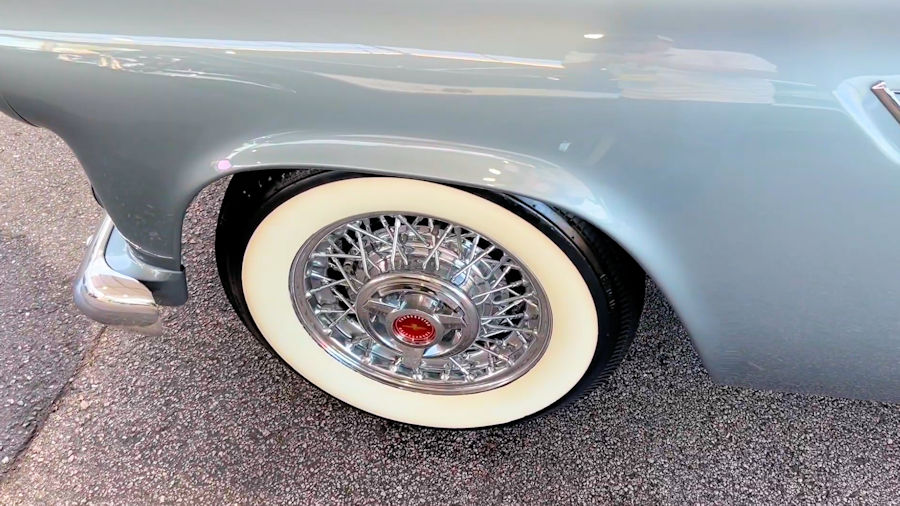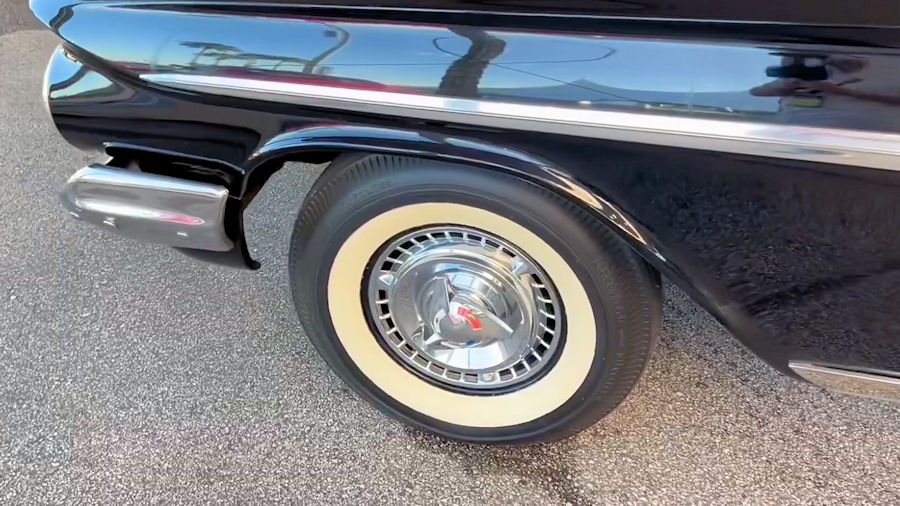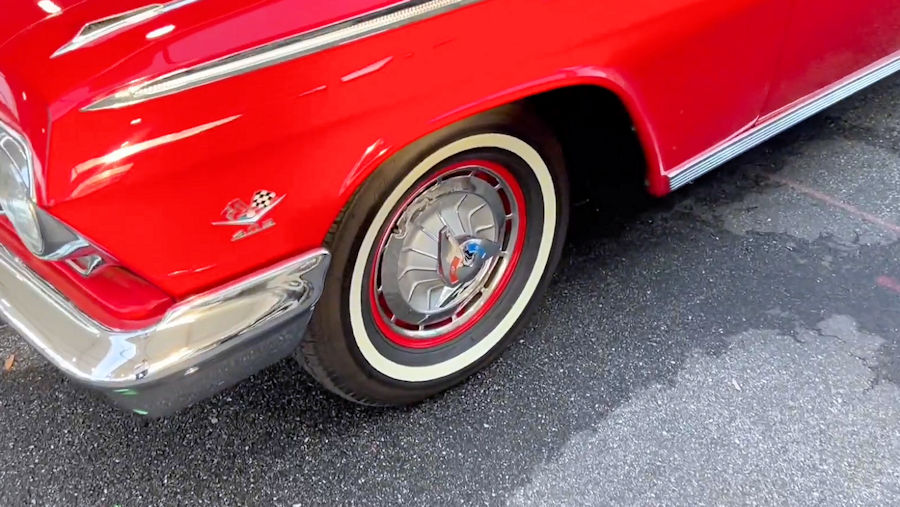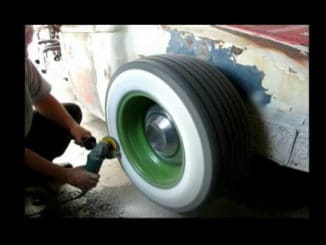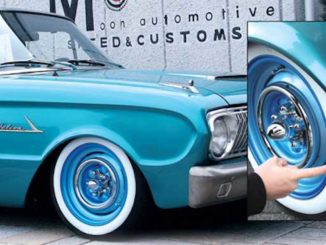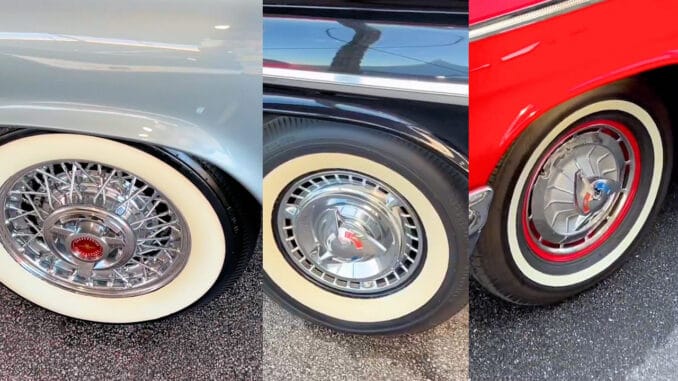
At Coker Tire, they seem to think that wide whitewall tires are always in style, but American automotive manufacturers phased out the wide whitewall tire in 1962, going for a more sporty look with narrow one-inch whitewalls. From there, whitewalls got smaller each year, until reaching the 3/8-inch pinstripe whitewall, as well as the other creative sidewalls such as redlines, gold lines, and tires with raised white letters. Here is a little more history of whitewall tires.
The Original Whitewall Tires
Automotive tires were off-white in color originally. This was due to the natural color of the rubber formula used by the tire companies. Zinc oxide would later be used to give the tires a more bright white color. Then, in 1910, B.F. Goodrich introduced a substance called “carbon black” into the manufacturing process.
This formula strengthened the rubber, which was quite important considering the condition of the roads back then. When mixed with the raw materials, the carbon black caused the tire to be black. A short time later, a smaller tire company jumped on the carbon black bandwagon, but only added it to the tread surface as a cost-saving measure.
The result? Black tread and white sidewalls.
While the first whitewall tire wasn’t intended to be a style enhancer, it quickly caught on and other tire companies began producing purpose-built whitewall tires.
By the 1920s, whitewall tires became more popular on high-end luxury cars, such as Duesenberg, but more conservative car manufacturers didn’t adopt whitewall tires as a factory option until the 1930s.
For instance, Ford first introduced the whitewall tire option in 1934. Whitewall tires became a popular option for passenger cars, only pausing briefly for World War II and the Korean War, due to materials shortage.
From there, whitewall tires offered beautiful styling to classic American cars, such as Chevrolet’s Bel Air series, Ford’s Fairlane, and the Chrysler Corporation’s line of luxurious convertibles and sedans.
The Width of Whitewalls
When whitewalls really became popular, they were used on Firestone Balloon tires, which featured tall sidewalls. These tires had whitewalls of nearly five inches. By the 1950s, whitewalls were at a pretty standard 3 inches, but that didn’t last long. Around 1954 through 1956, you could expect to see whitewalls from 2-1/2 to 2-11/16 inches on American cars.
Then, 1957 through 1961 saw another change with whitewalls ranging from 2-1/4 to 2-1/2 inches.
Finally, the big change happened in 1962, when most American automotive manufacturers made the switch to 1-inch whitewalls. From there, whitewalls got even more narrow, until finally getting down to 3/8-inch during the muscle car era.
The only exception in this whitewall width timeline is luxury cars. Some Lincolns and Cadillacs retained the wide whitewall look longer than other passenger cars, and they also held onto the 3/4-inch whitewall for quite some time.
Whitewall Style Changes on Real-World Examples
In this video, they’ll walk you through the evolution of tires, using real-world examples, such as:
- 1955 Ford Thunderbird (Coker Classic 670-15 bias-ply tires) with a 2 3/4″ whitewall.
- 1961 Chevrolet Impala Sport Coupe Bubbletop (BF Goodrich Silvertown 800-14 bias-ply tires) with a 2 1/4″ whitewall .
- 1962 Chevrolet Impala Convertible (American Classic 205/75R14 radial tires) with an authentic one-inch whitewall.
Today, whitewalls are all but phased out of passenger car production, but Coker Tire has products to fit more than 100 years of collectible cars — from the early 1900s through the 2000s.

